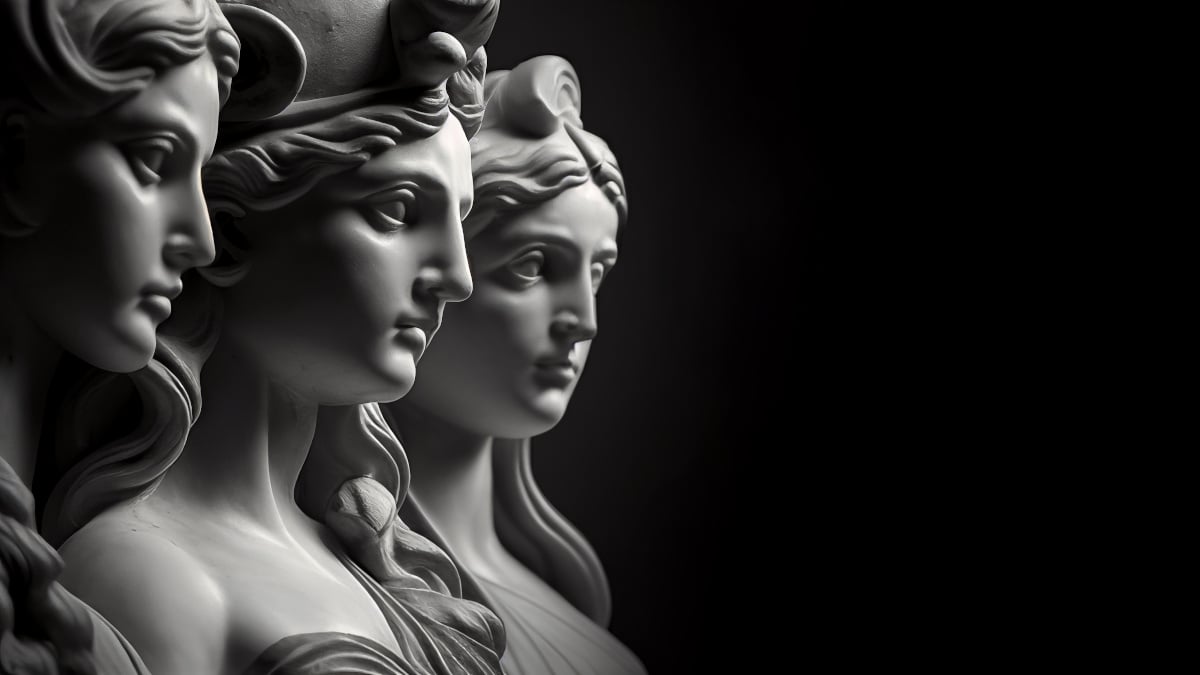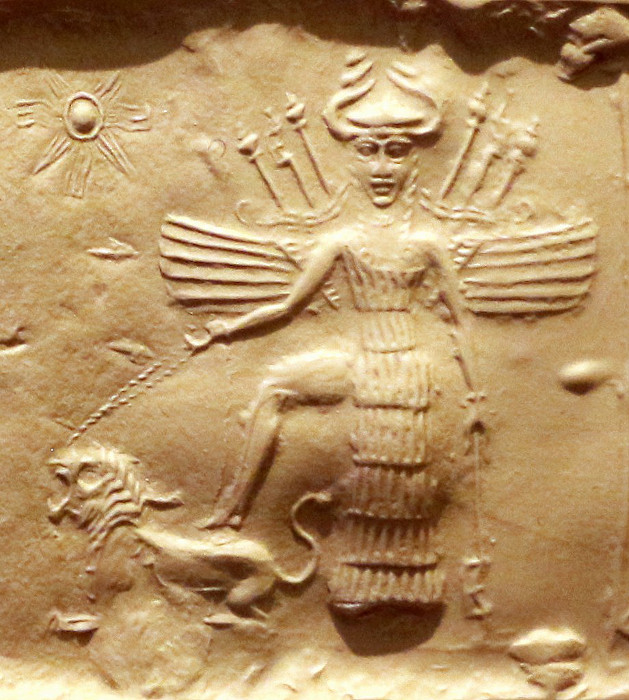
Ancient Concepts of Fate: Deities and Influencers of Destiny
Looming over the lives of gods and mortals alike, fate was more than a concept, it was an inscrutable force, a celestial decree woven by unseen hands. Dictating the unfolding of destinies, the gods and goddesses of fate were equally feared and venerated. Their omnipotence held the power to shape every moment and movement, casting grandeur or doom over the lives they touched. They commanded the course of existence, intertwining human struggles and triumphs with the grand design. Fate was inevitable, an absolute and untouchable force found in every ancient civilization.
Divine Law and the Tablet of Destiny: Mesopotamia
In ancient Mesopotamian societies, fate and death were inseparable; those who determined fate most often ruled in the underworld. The Akkadian Mamitu, mother of fate and goddess of destiny, found her home amongst the dead, deciding the fate of mortals at her own, fickle will. There would be no turning back, her verdicts were eternally irrevocable. The goddess and proper ruler of the underworld was Ereshkigal, sister to Ishtar, goddess of love, war, and fertility. Ereshkgial’s loyal admirer, Namtar, was a demonic god and Herald of Death. He determined the fates of those in passing and was a messenger to the gods, carrying news from the underworld to the divine realm.
- Gods Throwing Dice: Cleromancy In The Trojan War
- The Currency Of Chinese Princesses In Conjugal Peace Alliances
It was said that Ishtar once attempted to take her sister’s place as Queen of the Dead, but the great Anunnaki stepped in. They, too, played a part in the fates of humans and their fellow gods. Born from a union between the sky and the earth, they were supreme deities and judges, recognized as “those who see.” Post-Akkadian texts consider them as those who ruled over fate, as such in the great Epic of Gilgamesh, where they judged the dead based on their ever-changing life choices. Accordingly, as Ishtar faced her judgment, her divine fate was in the hands of gods who would not spare her mercy. Hung by nail, all her godly attributes - love, war, and fertility - died along with her.

Ishtar on an Akkadian cylinder seal impression. (Sailko / CC BY -SA 3.0)
Hittite mythology spoke of Lelwani, a deity of the underworld and divine law. In the god’s early incarnation, it was male, later to become female. She, with her coupled goddesses of fate, controlled the lifespans of humans and ensured safe passage through the underworld. By her side were Istustaya and Papaya, who spun threads, weaving the lives of mortals, most importantly, the kings. The Hittite Tawara and their Hurrian sisters, Hutena and Hutellura, were also goddesses of fate, additionally associated with midwifery and nursing the newly born, as destiny was most certainly bestowed at birth.
The Gulses, mysterious unnamed divine beings, whose collective meant to carve, engrave, or mark, were the earliest known goddesses of fate. They appeared at birth and followed the living throughout their lives. Similarly, in later times, each person was given a guardian, a Lamma, who assisted and guided them towards their destiny. In this way, fate, whether it be a guardian or a shadowy figure, was an active participant in their assigned human’s journey, pulling the strings behind the scenes, marking a person for life. The concept of fate being written is further exemplified by Nabu, vizier to Marduk. He was the god of literacy, rationality, wisdom, and a profound prophet. Upon the Tablet of Destiny, made of clay and written in cuneiform, he engraved his prophecies and the fates of humanity. Consequently, whoever was to hold this miraculous tablet, undoubtedly ruled the world.
During the late Achaemenid period, a religious movement emerged in Persia, Zurvanism. This movement focused on the god of fate, Zurvan, otherwise seen as the personification of Limitless Time, Time of Long Dominion, or Infinite Time. His conception merged concepts of time with fate. Bound to the axis mundi, the center of the earth, he worked from afar, conjuring the destinies of humans as a neutral figure, neither good nor evil. Through him, the forces of Angra Mainyu (chaos) and Ahura Mazda (order) were created. It was in these opposing forces that human destiny was perpetually influenced, shaped, and imposed, for better or worse.
The Snake, the Crocodile, and the Dog: Egypt
Akin to Mesopotamian mythology, the ancient Egyptians associated fate with death and judgment. Upon birth, a person would be given a Shai, an entity of predetermined destiny that was unique to each individual. They determined the length of one’s life along with their demise. In depictions, it was seen as human or serpent, symbolizing the dualities of life and death, protection and danger. In the illustrious city of Alexandria, Shai was formally known as a god of luck and good fortune, going by the name Agathos Daimon. The Shai joined their companion throughout their life and stood next to the scales that judged them in death, as their heart weighed against Ma’at. As the goddess of divine law, balance, and order, Ma’at judged those in death, ruling over their fates thereafter. She could send them to paradise, or leave them in the murky lairs of the underworld.
Renenet, another deity of fate, fertility, and luck rested on the shoulders of those most deserving and was collaborator to Shai. In the Greco-Roman period, Isis absorbed her characteristics, as she did with many of the goddesses. Though, Isis had always been known to play a decisive role in the fates of humans, as the mistress of life and sovereign to Shai and Renenet. During the Second Intermediate Period, stories were written about her in the Westcar Papyrus, a scroll containing tales of magical events. Within it, Isis was said to have echoed the names of several children as they came into the world, signifying her innate ability to foretell future events and contribute to the shaping of lives.




